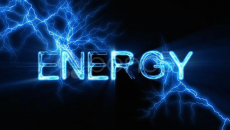

How energy moves through ecosystems to create food webs
An auxotroph is an organism that can synthesise its own compounds required for growth; chemosynthetic and photosynthetic organisms are auxotroph’s. For these compounds to be made energy is transformed between potential and kinetic forms when it is fixed or released. For example, light energy is absorbed by a plant, and is transformed to become energy from carbon compounds. The standard units of energy are as follows:
Joule- The joule is a derived unit of energy used in moving 1kg through 1 atmosphere.
Calorie- calorie is the heat energy required to raise 1 gram of water by 1 degree Celsius.
To convert between the two:
1 joule= 4.3 calories
Some definitions
Biomass is the mass of living material
Productivity refers to the rate of generation of biomass in an ecosystem. In other words, it is the fixing of energy in tissues or gametes.
Gross primary productivity is the total amount of energy assimilated from photosynthesis
Respiration is the process in living organisms involving the production of energy, but in this circumstance, when referring to respiration we are focusing on the fact that energy is used in metabolism.
Net primary productivity is the energy available for growth or reproduction after that used in respiration.
To work out net primary productivity, we must deduct respiration from gross primary productivity. This is displayed in the formula:
NPP= GPP- R
Standing crop is used to describe the biomass accumulated over time. It is dependent on environmental conditions; a warmer and wetter climate produces higher amounts of standing crop.
Turnover is the time taken to replace the standing crop.
Photosynthetic organisms can only grow when the gross primary product is greater than respiration. The compensation point is reached when light intensity is such that gross primary productivity is equal to respiration. Plants cannot grow when the compensation point is accomplished.
Deciduous plants are plants which lose their leaves in winter as conditions are not suitable for photosynthesis to take place. Coniferous evergreen plants photosynthesize in winter but at low levels. They have needles rather than leaves; the needles help to reduce water loss. This in turn avoids the energy costs of growing new leaves in spring, an advantage of coniferous evergreen plants against deciduous plants. Therefore, conifers outcompete deciduous trees in nutrient poor and arid environments.
Herbivores are animals that feed on plants, these plants are abundant as food. However, the quality is poor, and takes a lot of time, energy and effort to digest the food. Carnivores are animals which eat other animals, their food is high in energy, but energy is invested in catching and killing prey. The costs of grabbing prey are more than the costs of herbivory.
Energy Efficiency has various calculations which are highly useful:
Assimilation efficiency = energy assimilated / energy consumed
Production efficiency = Energy fixed in tissues / Energy consumed
Growth efficiency = energy fixed in tissues / Energy assimilated
Endotherms (animals which can internally control their body temperatures) have lower efficiencies as they have higher metabolic costs.
image- http://www.balkaneu.com/mediterranean-2040-how-will-the-energy-map-be-shaped/

0 Comment:
Be the first one to comment on this article.